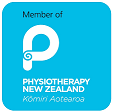
The knee is very susceptible to injury in sports, because of the large forces produced for example in kicking the ball, jumping/landing, or running with directional changes. It is also the centre of the lever arm of the leg, so it is susceptible to greater forces being transmitted from the trunk through the hip, and from the ground through the foot and ankle.
Your knee meniscus is a piece of fibrocartilage that separates the thigh bone (femur) from your shin bone (tibia). It is commonly referred to as your ‘cartilage’. Each knee joint has a medial (inside) meniscus and a lateral (outside) meniscus. The meniscus assists with the rotational stability created by the anterior cruciate ligament, as well as acting as a shock absorber to dampen the tremendous forces on the knee that are created when you walk, run and jump. The amount of force increases exponentially as the speed of movement increases from walking to running to jumping.
The knee meniscus is usually torn traumatically (ie. in an obvious incident/accident), by twisting on a slightly flexed knee while playing football or other sports. In older adults, underlying wear and tear causes degeneration of the meniscus, with arthritic changes that can result in pain. These changes may also predispose it more easily to injury or a tear.
How can we help?
A small meniscus tear, or a tear on the outside/perimeter of the meniscus will usually respond quickly to physio treatment, taking approximately 6–8 weeks to heal fully. For more severe injuries’ surgery may be required; however, most surgeons will recommend a few weeks of physical therapy treatment before contemplating surgery (you may successfully rehabilitate your knee injury without the need for surgery!) and you will require rehabilitation following surgery too.
If you are experiencing symptoms of a meniscus injury, we recommend that you schedule an appointment with one of our physiotherapists. Our team of experts can assess your condition and develop a personalized treatment plan that targets the root cause of your symptoms.
Physiotherapy treatment will aim to:
- Accurate diagnosis: Our physiotherapists are highly trained to accurately diagnose meniscus injuries and determine the best course of treatment
- Personalized treatment plan: We develop an individualized treatment plan based on your specific needs and goals, including exercises, manual therapy, and education on injury prevention
- reduce pain and inflammation
- normalise joint range of motion
- strengthen your knee: especially quadriceps and hamstrings
- strengthen your lower limb: calves, hip, pelvis and core muscles
- improve patellofemoral (kneecap) alignment
- normalise your muscle lengths
- improve your proprioception and balance
- improve your technique and function, e.g. walking, running, squatting, hopping and landing n minimise your chance of re-injury.











